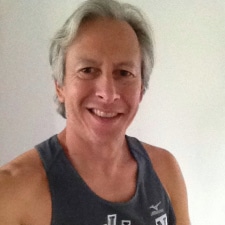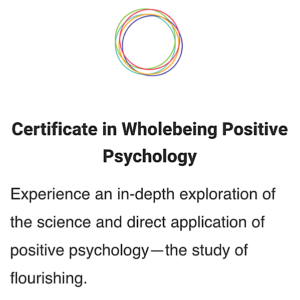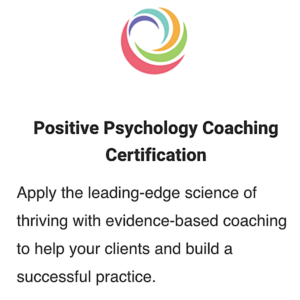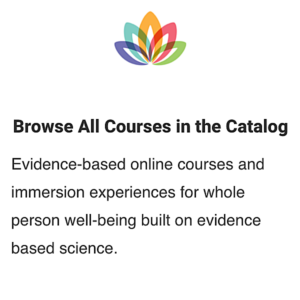by Louis Cinquino
In this series, CiPP4 graduate Louis Cinquino brings to life some of the core concepts of positive psychology and wholebeing happiness—putting the basics in context through his insightful observations, personal experiences, and fresh interpretations. Louis begins each installment in the series with a six-word story.
Key turns. Click. Locked in? Out?
Have you ever been in an escape room?
An escape room is a themed and decorated space where participants, acting as a team, try to solve puzzles that unlock clues and the doors that lead to your freedom. I see ads for them almost everywhere I travel now. There are currently about 2,000 of these adventure experiences in the United States, including one less than a mile from my house.
The other night, I saw this Portlandia skit that depicts two couples who take drastically different approaches to both the challenge of the room and the clues it offers them. It got me laughing—and thinking.
I’ve never been in that kind of escape room, but I have been in another kind of escape room for most of my life, and maybe you have, too: the escape room of emotions.
Like the staged escape room, certain emotions confine me—fear keeps me from reaching too high, doubt keeps me from moving solidly toward what I want, the blues keep me from caring. Feelings like these creep up (or ubiquitously linger) and lock all windows and doors to growth and peak performance.
Yet, there is hope. The emotional escape room also has all the clues I need to get out from these debilitating emotions—all the books (and blog posts :)) I’ve read, the courses I’ve taken, all the good advice I’ve gotten from teachers and spiritual practice, and the experiences I’ve had with friends, family, and colleagues.
The keys to unlocking the emotional restraints are within reach and in plain sight—and yet, where is all this wisdom hiding when I wake up to face each day with a new search?
If you are at all like me, maybe you, too, are looking for clues to the puzzle of feeling better every day, feeling motivated to act, feeling the capacity to love with compassion.
A problem for me is that when I think I have all the answers and just stay within my bubble, I start to get claustrophobic. I get a whiff of panic that my life is in a downward spiral, and pretty much react like Carrie and Fred in the video clip. (Although, luckily, I did not take along the family hatchet when I moved out in the divorce.)
On the other hand, when I behave more like Steve and Ann in the skit, I find clues and tools that lead me to emotional freedom.
The first step is to be aware when we are trapped in our emotions. This is by far the most critical task. Taking even one little step back, to recognize that certain emotions are starting to rise in us, can help. With that awareness, we can consciously choose to look for ways out of the trap.
We can then work to decipher the clues and use the tools we already have at hand to get unstuck from doing the same old thing. We can break through the patterns that limit us, calm the swirl of emotion that confines us, and move confidently through the portal to the better side of our life.
Here are some keys that unlock those doors.
Emotions. Let’s be clear about one thing. We are not looking for freedom from emotions, for our emotions are a deeply intimate part of who we are. We are looking for freedom with our emotions. We want to be aware of them, but also put a little distance between us and them. We are not everything we feel. We are not everything we have come to believe. We can live in awareness that our beliefs, our emotions, and our ideas of who the world says we must be are not cast in concrete. In this way, we can adopt a growth mindset that can catapult us out of the negative loops that trouble us over and over again. For more on recognizing our emotions as they occur, read this short piece about Paul Ekman, an emotion researcher who’s worked with the Dalai Lama and Hollywood (Inside Out).
Strengths. We all can grow. Yet here we are. The VIA Character Strengths survey helps us see where “here” is. Our strengths are perhaps the best clues in our emotional escape room. When we get a clear picture of where and who we are at this time, we can access what’s working best in our life and bring forth more of that to help us move toward our goals. Each strength is another lever, button, or hidden key that be activated as an escape hatch to the life we want. Take the VIA survey and identify your own personal constellation of strengths.
Meaning. Our life has to have meaning for us to truly be happy and satisfied. Even in the face of tremendous adversity—or should I say especially in the face of tremendous adversity—when we have devoted our energy and talents to a unifying purpose, we can find a way to keep going. As Victor Frankl, a Holocaust survivor and founder of the Logotherapy school of psychiatry, wrote in Man’s Search for Meaning, “Those who have a ‘why’ to live, can bear with almost any ‘how’.” Here’s a short summary of some of Frankl’s groundbreaking work.
Upward Spiral. Sometimes we can breathe away distress. Other times, it can simply be forgotten in the flow of work and achievement. And, every once in a while, it must blasted away with a frenzy of elation. That can mean establishing little rituals (like messaging with your friends, meditation, or a daily yoga practice) that build on themselves for better days. It can mean immersion in work that has meaning, or in the excitement that comes from the joyful moments and relationships that give you the most pleasure in life. We all do better when we have triggers for upward spirals, our go-to methods of moving through sour emotions and breaking their hold on us. What’s left in their wake could be peaceful calm, the satisfying buzz of a flow experience, or intense joy.
In order to feel these transformative emotions, there are no clues, no cheat sheets. We each find our own way to freedom.
Louis Cinquino is a writer, editor, runner, dad, and graduate of CiPP4. His personal observations, discoveries, and training plan as he prepared for the Fifth Avenue Mile race were featured in “The Mulligan Mile,” (Runners World, September 2013). The article forms the basis of his memoir, currently awaiting publication. He also develops online advertising and has worked with Wholebeing Institute to promote its website and course enrollment. You can read more from Louis on his blog, TakingMulligans.com.


 Louis Cinquino is a writer, editor, runner, dad, and graduate of CiPP4. His personal observations, discoveries, and training plan as he prepared for the Fifth Avenue Mile race were featured in “The Mulligan Mile,” (Runners World, September 2013). The article forms the basis of his memoir, currently awaiting publication. He also develops online advertising and has worked with Wholebeing Institute to promote its website and course enrollment. You can read more from Louis on his blog,
Louis Cinquino is a writer, editor, runner, dad, and graduate of CiPP4. His personal observations, discoveries, and training plan as he prepared for the Fifth Avenue Mile race were featured in “The Mulligan Mile,” (Runners World, September 2013). The article forms the basis of his memoir, currently awaiting publication. He also develops online advertising and has worked with Wholebeing Institute to promote its website and course enrollment. You can read more from Louis on his blog, 


